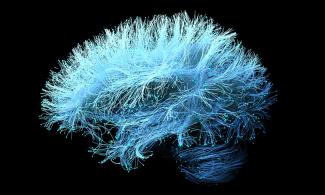
Instructions
Do the preparation exercise first. Then read the text and do the other exercises.
Me and my brain
We all know that significant changes occur in our bodies during adolescence, but have you ever stopped to wonder what's actually going on inside our brains during this time?
To paint a clearer picture, we should first familiarise ourselves with the different parts of the brain. Did you know, for instance, that our brains are made up of around 100 billion nerve cells called neurons? And stemming from these neurons are several branch-like structures for sending and receiving electrical signals? Every time we do or think anything, a signal is transmitted. The signal travels down a long structure called the axon and, at the end, it passes across tiny gaps called synapses to the dendrites of another neuron, which receive the signal. In this way, messages are sent across our neural network.
Our brain structure changes dramatically as we grow up. Newborn babies have almost all their neurons but few connections between them, which is why they can't do very much. After a few months however, the number of connections explodes, which in turn helps tiny tots master a whole range of new skills such as walking and talking. Despite earlier myths that most brain development is completed in the first few years, we now know that our brains continue to develop throughout our lives and perhaps the most dramatic time of change and development is during puberty.
During this period of reorganisation, the brain witnesses a sudden increase in neurons not dissimilar to a plant growing uncontrollably in spring. Just as we prune a plant to make it stronger and healthier, we prune our brains. The connections that are used become stronger, whereas those which aren't used wither and die. So, the more frequently an action or thought is activated, the stronger the connections become between the neurons, which in turn strengthens the part of the brain being used. This explains why the more you do something, the better you become at it, reinforcing the old adage 'practice makes perfect'. In fact, it would seem that the teenage brain provides optimum conditions for perfecting skills such as playing a musical instrument, speaking another language or learning a complex computer game. It could therefore be argued that teenagers determine the development of their own grey matter through the activities and experiences they engage in.
It may also be unsurprising to many to learn that the last part of the adolescent brain to develop is the frontal cortex, responsible for self-control, problem solving and decision making. Consequently, long before teens become adept at rational, abstract thinking and logical decision making, they rely on the emotional centre of the brain to make choices and think. So perhaps unpredictable, volatile, risk-taking teenage behaviour, often put down to hormones, may actually have more to do with what's going on inside our brain.
Did you learn anything new from the text? Do you know any interesting facts about the human brain?

Comments